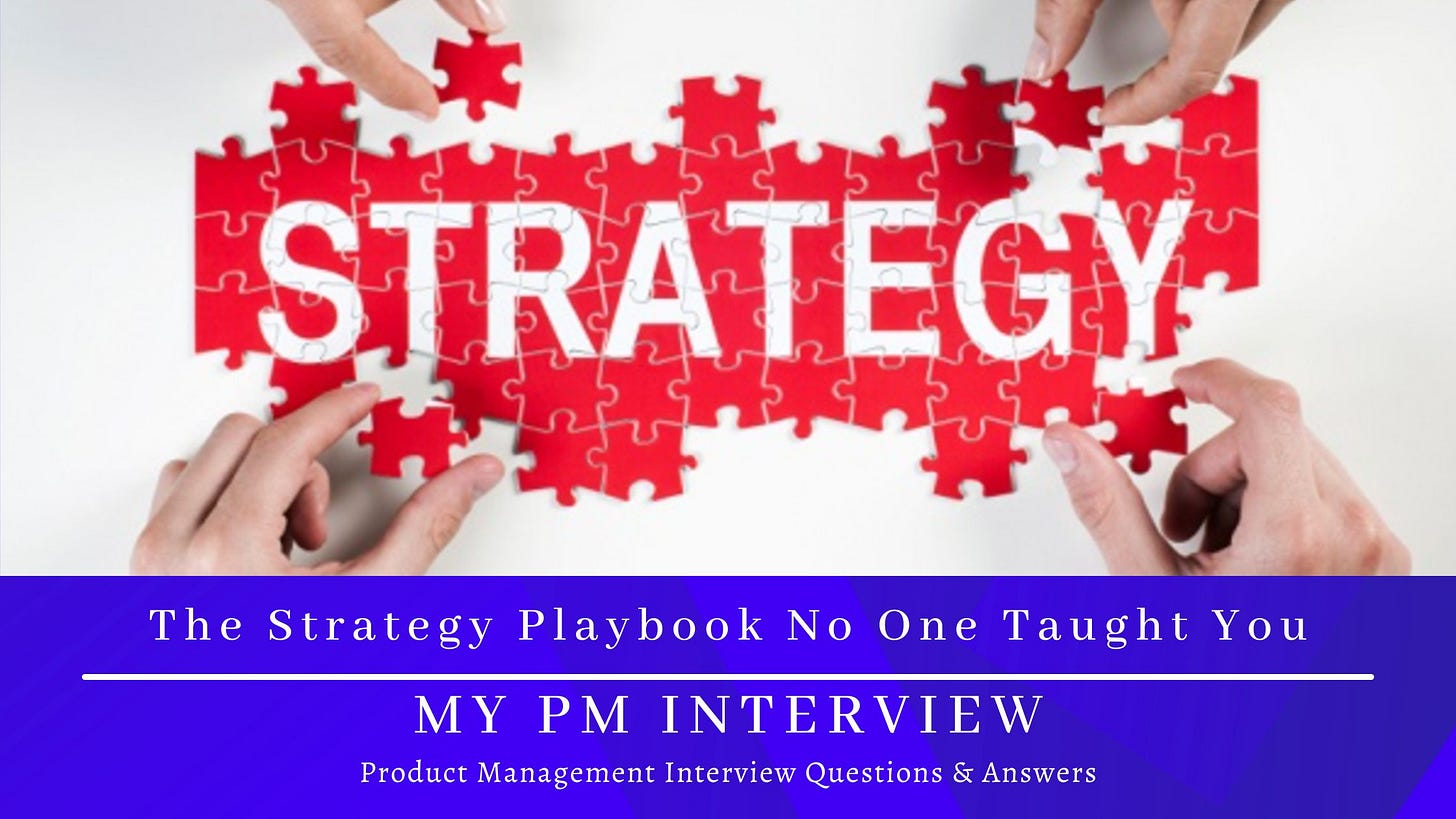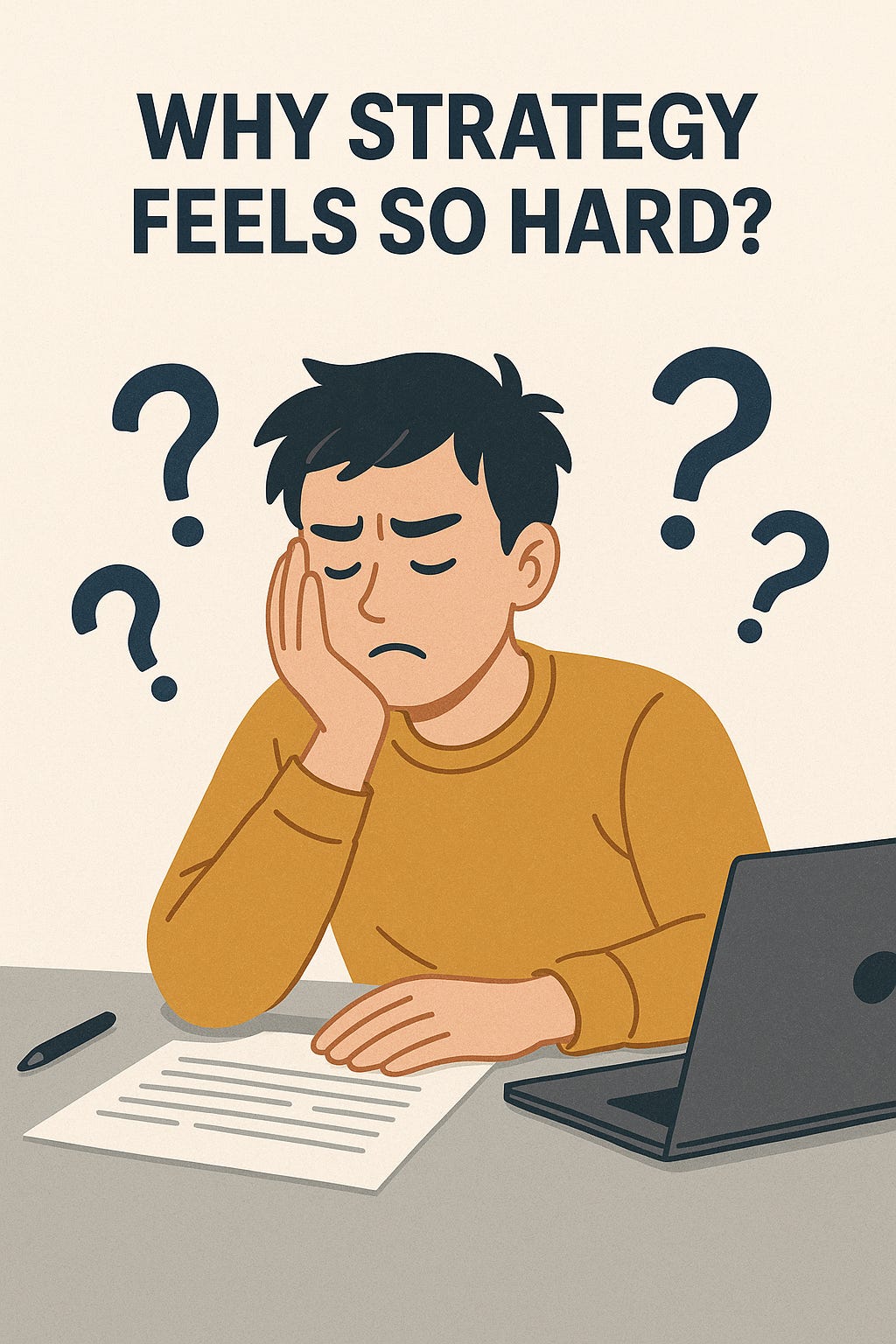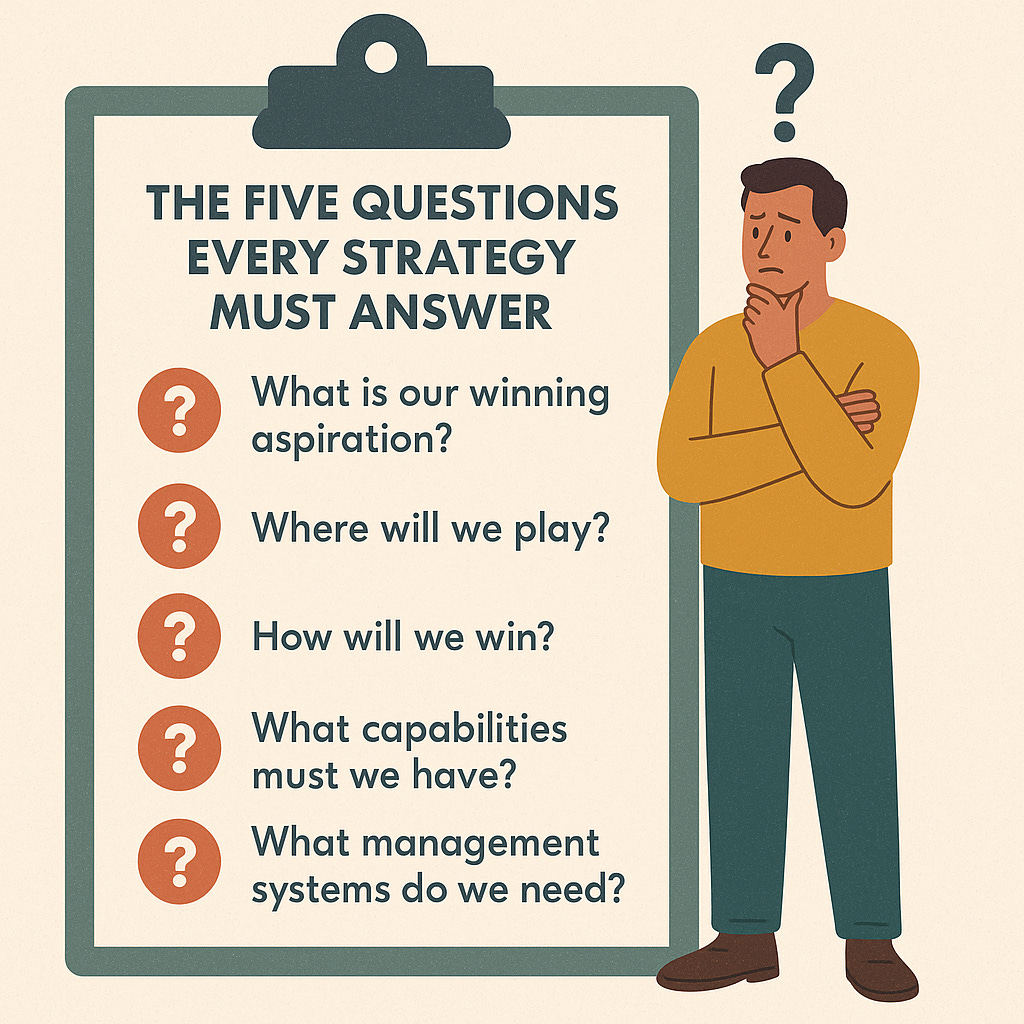The Strategy Playbook No One Taught You
Strategy - Why Most People Are Bad at Strategy (And What You Can Do Differently)
Why Strategy Feels So Hard?
Most people are terrible at strategy — and it’s not because they’re not smart. It’s because strategy is one of the most misunderstood, intimidating, and under-practiced skills in business.
Let’s start with the truth: strategy is hard. Not because it’s complicated in a technical sense, but because it requires integrative thinking — pulling together a web of interconnected choices and aligning them to drive a single goal. Unlike execution, which thrives on clarity and process, strategy thrives on ambiguity, uncertainty, and trade-offs.
And that’s where the emotional resistance kicks in.
Strategy demands that you say yes to a few things and no to many. It requires commitment. That’s scary — because what if you’re wrong? What if the road you didn’t choose turns out to be better? Many teams stay in the “playing to play” zone just to avoid the discomfort of real decision-making.
To make matters worse, most people were never taught how to do strategy well.
In business schools, strategy has become increasingly theoretical, buried under frameworks like the “resource-based view of the firm” — concepts that rarely translate into practical action in the real world.
In companies, strategy is often seen as something for the C-suite. The rest of the org? Just execute.
The result: a massive skill gap. People across all levels — from product managers to designers to engineers — are expected to contribute to strategy, but are unequipped to do so. And without a clear, practical approach, most just avoid it altogether.
The Five Questions Every Strategy Must Answer
So, how do you get better at strategy?
You start by asking the right questions.
Effective strategy isn’t a slogan or a mission statement. It’s a set of coherent, connected choices that guide what you do (and just as importantly, what you don’t). Think of strategy as answering five cascading questions — together, they shape everything from product decisions to organizational priorities.
Here are the five:
1. What is our Winning Aspiration?
This is the “why.” What are you actually trying to achieve? Are you trying to be the biggest player? The most loved? The most profitable? Clarity here sets the context for every other decision.
2. Where will we play?
You can’t compete everywhere. This is about choosing your battlefield. What customers will you serve? In what geographies? Through what channels? At what part of the value chain? Being specific here is essential.
3. How will we win?
What’s your competitive advantage? Are you going to be cheaper than everyone else — or better in a way no one else is? This is your core theory of value. And yes, you need to choose — you can’t be everything to everyone.
4. What capabilities must be in place?
These are the unique strengths you’ll need to deliver on your “how to win.” It could be technology, brand, partnerships, logistics, or talent. If your competitors can easily build them too, it’s not a real advantage.
5. What management systems will support this?
This is the overlooked part. Strategy isn’t just about decisions — it’s about follow-through. What systems, processes, and incentives need to be in place to build and sustain your key capabilities?
Great strategies don’t emerge from brainstorming sessions or wishful thinking. They’re built by rigorously answering these five questions — and continuously revisiting them as the business evolves.




